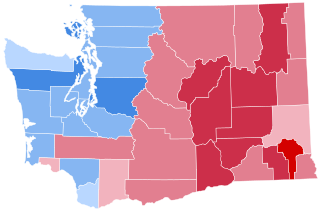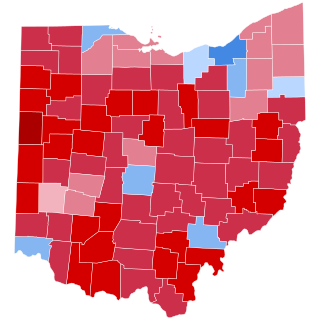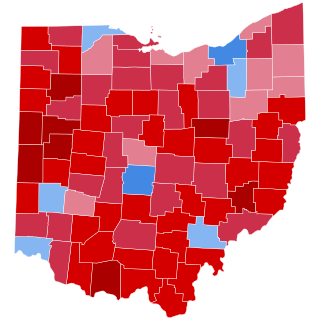Disfranchisement, also called disenfranchisement, or voter disqualification is the restriction of suffrage of a person or group of people, or a practice that has the effect of preventing a person exercising the right to vote. Disfranchisement can also refer to the revocation of power or control of a particular individual, community or being to the natural amenity they have; that is to deprive of a franchise, of a legal right, of some privilege or inherent immunity. Disfranchisement may be accomplished explicitly by law or implicitly through requirements applied in a discriminatory fashion, through intimidation, or by placing unreasonable requirements on voters for registration or voting. High barriers to entry to the political competition can disenfranchise political movements.

The 2008 United States presidential election was the 56th quadrennial presidential election, held on Tuesday, November 4, 2008. The Democratic ticket of Barack Obama, the junior senator from Illinois, and Joe Biden, the senior senator from Delaware, defeated the Republican ticket of John McCain, the senior senator from Arizona, and Sarah Palin, the governor of Alaska. Obama became the first African American to be elected to the presidency, as well as being only the third sitting United States senator elected president, joining Warren G. Harding and John F. Kennedy. Meanwhile, Biden became the first senator running mate of a senator elected president since Lyndon B. Johnson in the 1960 election. This is the only election where both major party nominees were sitting Senators.

John Kenneth Blackwell is an American politician, author, and conservative activist who served as the mayor of Cincinnati, Ohio (1979–80), the Ohio State Treasurer (1994–99), and Ohio Secretary of State (1999–2007). He was the Republican candidate for governor of Ohio in 2006, the first African-American major-party candidate for governor of Ohio. He is currently a Senior Fellow for Family Empowerment with The Family Research Council. He currently sits as Vice-President of the Executive Committee of the Council For National Policy and is a member of the Council on Foreign Relations.

Election Day in the United States is the annual day for general elections of federal public officials. It is statutorily set by the U.S. government as "the Tuesday next after the first Monday in November", i.e. the Tuesday that occurs within November 2 to November 8.

In elections in the United States, a provisional ballot is used to record a vote when there are questions about a given voter's eligibility that must be resolved before the vote can count. The federal Help America Vote Act of 2002 guarantees that, in most states, the voter can cast a provisional ballot if the voter states that they are entitled to vote.
During the 2004 United States elections, concerns were raised about various aspects of the voting process, including whether voting had been made accessible to all those entitled to vote, whether ineligible voters were registered, whether voters were registered multiple times, and whether the votes cast had been correctly counted. More controversial was the charge that these issues might have affected the reported outcome of the presidential election, in which the incumbent, Republican President George W. Bush, defeated the Democratic challenger, Senator John Kerry. Despite the existing controversies, Kerry conceded the election the following day on November 3.

The 2004 United States presidential election in Ohio took place on November 2, 2004, and was part of the 2004 United States presidential election. Voters chose 20 representatives, or electors to the Electoral College, who voted for president and vice president.
Rasmussen Reports is an American polling company founded in 2003. The company engages in political commentary and the collection, publication, and distribution of public opinion polling information. Rasmussen Reports conducts nightly tracking, at national and state levels, of elections, politics, current events, consumer confidence, business topics, and the United States president's job approval ratings. Surveys by the company are conducted using a combination of automated public opinion polling involving pre-recorded telephone inquiries and an online survey. The company generates revenue by selling advertising and subscriptions to its polling survey data.

Jennifer Lee Brunner is an American attorney, politician and judge. She is currently an associate justice of the Ohio Supreme Court, a position to which she was elected after serving as a judge on Ohio's Tenth District Court of Appeals. On June 8, 2021, Brunner announced her candidacy for Chief Justice of the Ohio Supreme Court in the November 8, 2022, general election. Brunner is a member of the Democratic Party who served as the Ohio Secretary of State; Brunner was the first woman to serve in this capacity. She took office after sixteen years of Republican control, which included two four-year terms by her predecessor J. Kenneth Blackwell, who oversaw the 2000 and 2004 United States elections. Brunner served only a single term as Secretary of State. When it came time for re-election in 2010, she instead made an unsuccessful bid for the U.S. Senate. Prior to being elected Secretary of State, Brunner worked in the Ohio Secretary of State's Office and served as a County Judge in Franklin County, Ohio. She also owned her own private practice; during her private practice career, she focused on election law and campaign finance law. She represented a broad range of candidates, businesses, political parties and committees before the Ohio Elections Commission on quasi-criminal matters.

The 2008 United States presidential election in California took place on November 4, 2008, in California as part of the 2008 United States presidential election. Voters chose 55 electors, the most out of any of the 50 states, to the Electoral College, who voted for president and vice president.

The 2016 United States presidential election was the 58th quadrennial presidential election, held on Tuesday, November 8, 2016. The Republican ticket of businessman Donald Trump and Indiana governor Mike Pence defeated the Democratic ticket of former secretary of state and First Lady of the United States Hillary Clinton and the United States senator from Virginia Tim Kaine, in what was considered one of the biggest upsets in American political history.

The 2012 United States presidential election in Washington took place on November 6, 2012, as part of the 2012 United States presidential election in which all 50 states plus the District of Columbia participated. Washington voters chose 12 electors to represent them in the Electoral College via a popular vote pitting incumbent Democratic President Barack Obama and his running mate, Vice President Joe Biden, against Republican challenger and former Massachusetts Governor Mitt Romney and his running mate, Congressman Paul Ryan.

The 2012 United States presidential election in Ohio took place on November 6, 2012, as part of the 2012 United States presidential election in which all 50 states plus the District of Columbia participated. Ohio voters chose 18 electors to represent them in the Electoral College via a popular vote pitting incumbent Democratic President Barack Obama and his running mate, Vice President Joe Biden, against Republican challenger and former Massachusetts Governor Mitt Romney and his running mate, Congressman Paul Ryan. This election continued Ohio's bellwether streak, as the state voted for the winner of the presidency in every election from 1964 to 2016.

Statewide polls for the 2016 United States presidential election include the following. The polls listed here provide early data on opinion polling between the Democratic candidate, the Republican candidate, the Libertarian candidate, and the Green candidate. Prior to the parties' conventions, presumptive candidates were included in the polls. State polling is not conducted in all states for the election due to various factors. More polls usually are conducted in states that are considered swing states as more attention is given to the results. For determining a statistical tie, the margin of error provided by the polling source is applied to the result for each candidate.

Voter suppression in the United States consists of various legal and illegal efforts to prevent eligible citizens from exercising their right to vote. Such voter suppression efforts vary by state, local government, precinct, and election. Voter suppression has historically been used for racial, economic, gender, age and disability discrimination. Before and during the American Civil War, most African-Americans had not been able to vote. After the Civil War, all African-American men were granted voting rights, causing some Southern Democrats and former Confederate states to institute actions such as poll taxes or language tests that were ostensibly not in contradiction to the U.S. Constitution at the time, but were used to limit and suppress voting access, most notably African American communities that made up large proportions of the population in those areas, but in many regions the majority of the electorate as a whole was functionally or officially unable to register to vote or unable to cast a ballot. African Americans' access to registration and voting in the South was often difficult until the Civil Rights Act of 1964, and continues to be a subject of debate.

The 2016 United States presidential election in Ohio was held on Tuesday, November 8, 2016, as part of the 2016 United States presidential election in which all 50 states plus the District of Columbia participated. Ohio voters chose electors to represent them in the Electoral College via a popular vote, pitting the Republican Party's nominee, businessman Donald Trump, and running mate Indiana Governor Mike Pence against Democratic Party nominee, former Secretary of State Hillary Clinton, and her running mate Virginia Senator Tim Kaine. Ohio had 18 electoral votes in the Electoral College.
Statewide polls for the 2016 United States presidential election are as follows. The polls listed here, by state, are from 2013 to December 31, 2015, and provide early data on opinion polling between a possible Republican candidate against a possible Democratic candidate.

The 2016 Ohio Republican presidential primary took place March 15 in the U.S. state of Ohio, as a part of the Republican Party's series of presidential primaries ahead of the 2016 presidential election. The Ohio primary was held alongside Republican primary elections in Florida, Illinois, Missouri and North Carolina, along with the Democratic contest in Ohio.
Statewide polls for the 2016 United States presidential election are as follows. The polls listed here, by state, are from January 1 to August 31, 2016 and provide early data on opinion polling between a possible Republican candidate against a possible Democratic candidate.

The 2020 United States presidential election in Ohio was held on Tuesday, November 3, 2020, as part of the 2020 United States presidential election in which all 50 states plus the District of Columbia participated. Ohio voters chose electors to represent them in the Electoral College via a popular vote, pitting the Republican Party's nominee—incumbent President Donald Trump and his running mate, Vice President Mike Pence—against the Democratic Party nominee, former Vice President Joe Biden and his running mate, California Senator Kamala Harris. Ohio had 18 electoral votes in the Electoral College.














